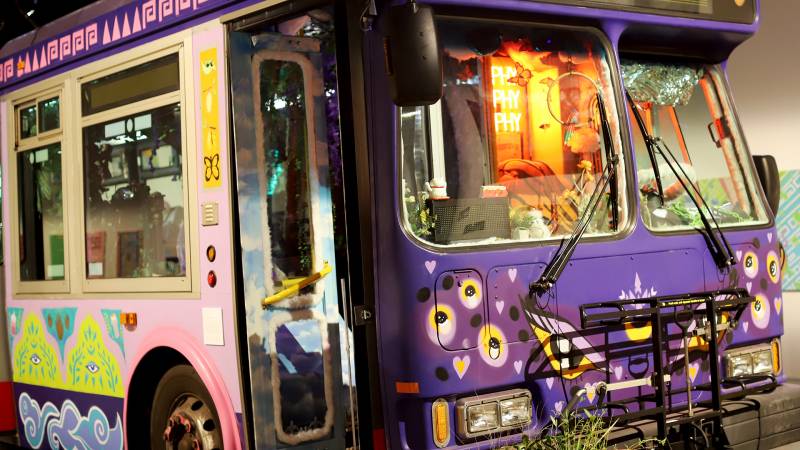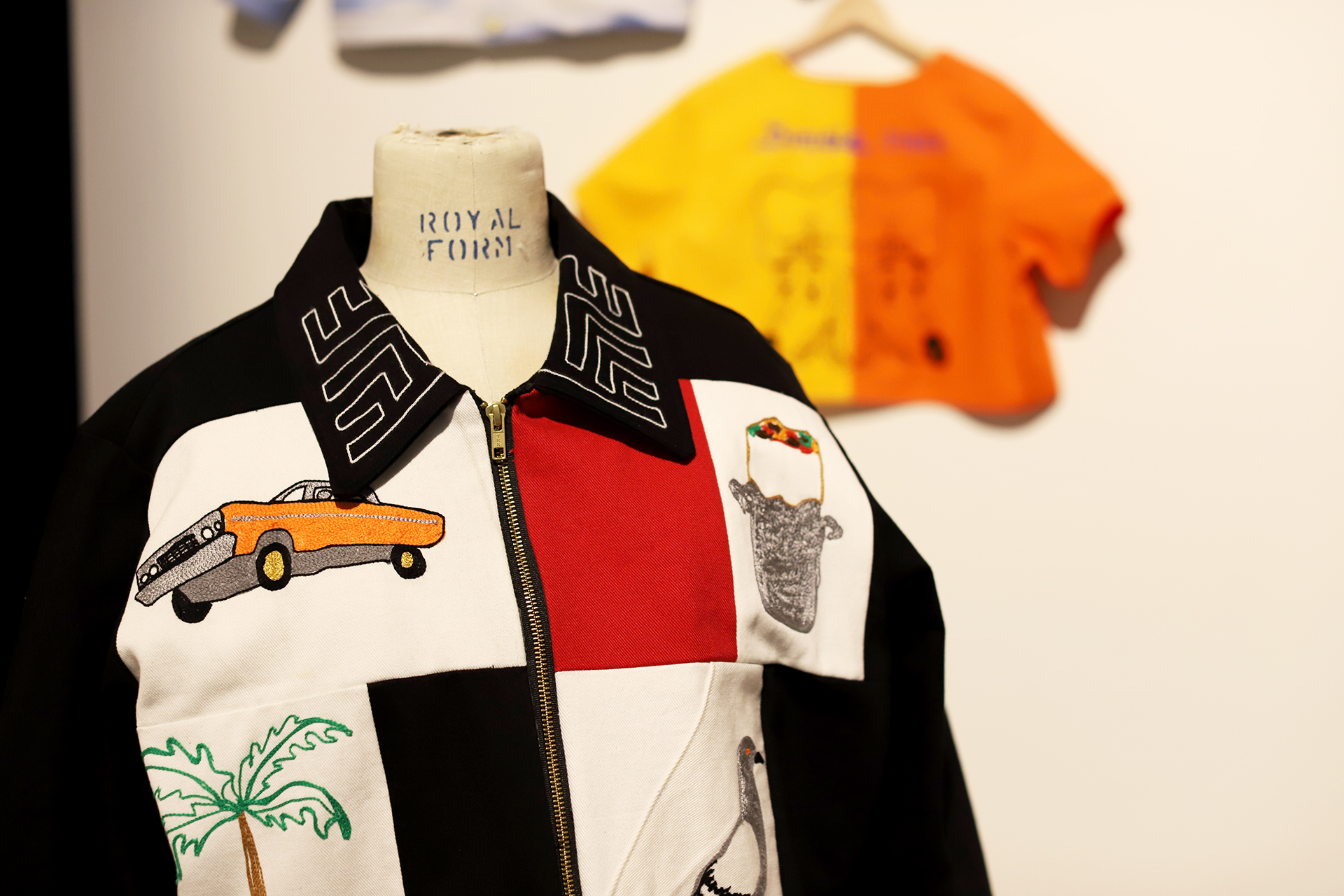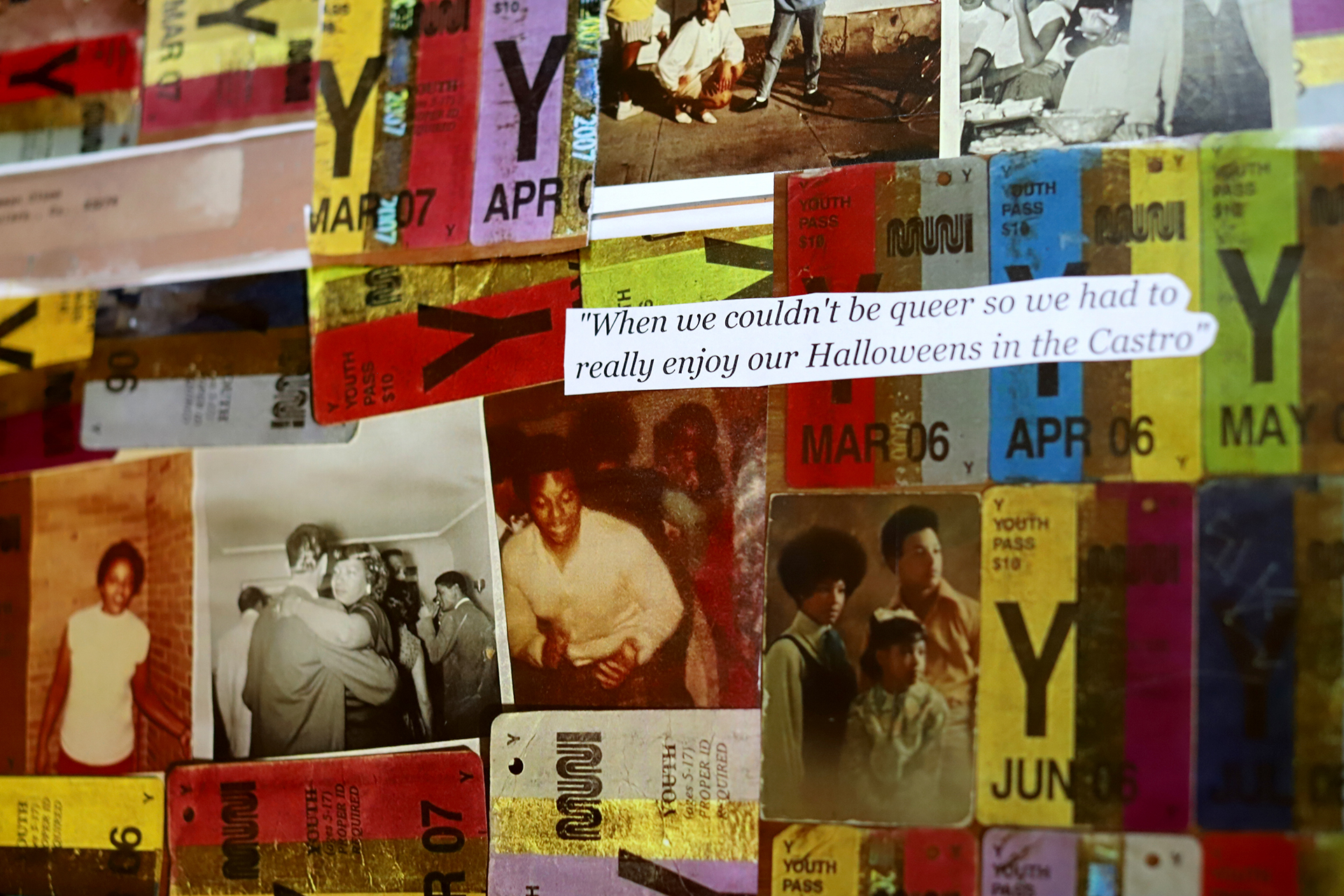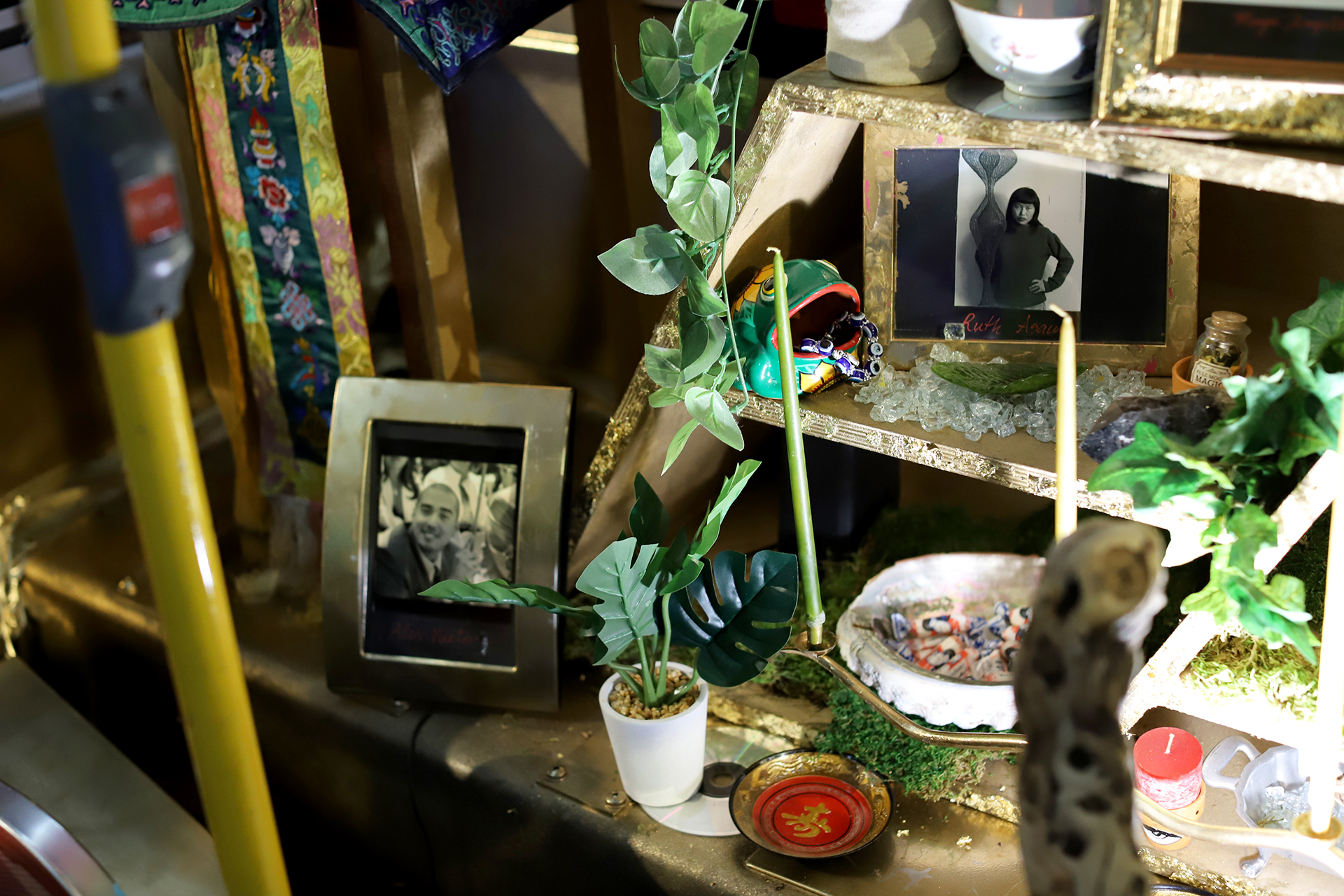Almost every longtime Bay Area resident has their favorite Muni route. For me, it’s the 38, the bus that starts downtown, then cruises past the Fillmore and Japantown to the Richmond District. When I exit through the back doors and into the heart of San Francisco’s Russian-speaking immigrant neighborhood, the smells of church frankincense and fresh rye bread awaken some of my favorite childhood memories.
As an immigrant kid growing up in the East Bay, my family’s frequent trips to San Francisco anchored me in my cultural identity. So I felt an instant connection to the intimate, poetic way 13 San Francisco-born-and-raised artists approach city life and public transit in the new group exhibition Muni Raised Me.
In the SOMArts show curated by Meymey Lee, Sasha Vu and Celi Tamayo-Lee, bus lines are the arteries that connect immigrant, Black and working-class neighborhoods — the heart and soul of San Francisco culture. The multicultural crew of artists tells collective and personal histories through installations, paintings, audio and video. In the context of record-shattering rent prices and ongoing displacement, their memories feel like precious keepsakes.
The centerpiece in SOMArts’ high-ceilinged, warehouse gallery is Altared SF by Sasha Vu and Ling Ling Lee, a real-life, decommissioned Muni bus turned into a temple with an original soundtrack of beats by Vu’s brother, Ben Vu. The Magic School Bus-esque, psychedelic ride transports viewers with its maximalist assemblages of objects, each one evoking a different San Francisco cultural touchpoint.
As I took in the hippie-raver curios, Buddhist statues and rainbow decorations, I arrived at a quiet moment of contemplation. In the back, an altar honors victims of police brutality, including Mario Woods and Alex Nieto, whose deaths galvanized San Francisco’s movement for police accountability over the past decade. Like much of Muni Raised Me, the piece feels joyful yet grounded in a sobering reality.
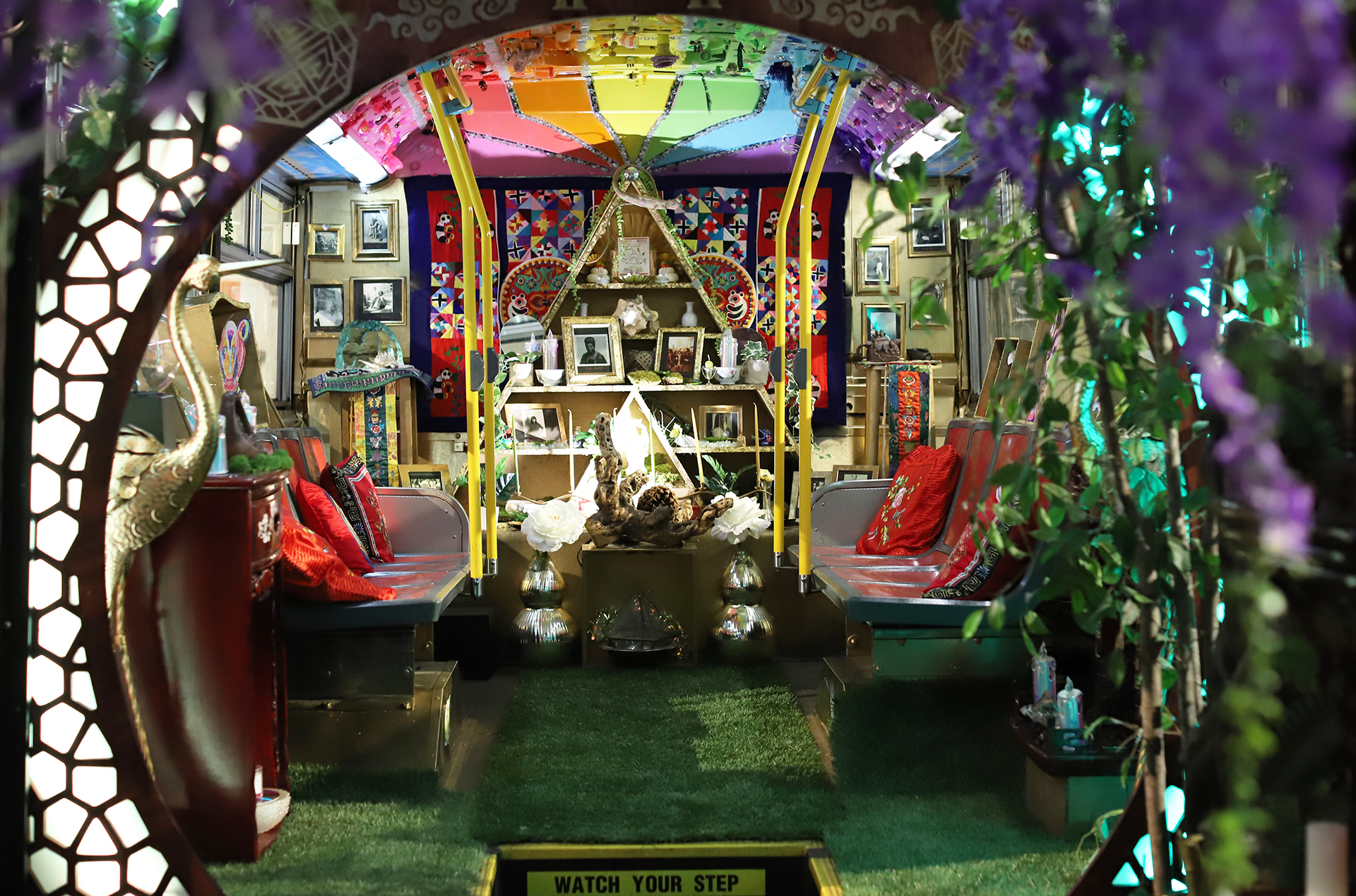
The art in Muni Raised Me mimics the texture and aliveness of the City. Music videos by local artists such as Qing Qi, La Doña, A-1 and Baghead bring a house party soundtrack. Ben Vu’s short film All That and Dim Sum radiates warmth, reminding us that San Francisco is also a city of families who eat dumplings together on Sundays — not just individualistic strivers. Sophia Mitty’s custom embroidery on jackets tells stories through workwear-inspired fashion. And tanea lunsford lynx’s installation, a listening booth collaged with family photos, plays poems about connection, loss and longing from her point of view as a fourth-generation Black San Franciscan.
